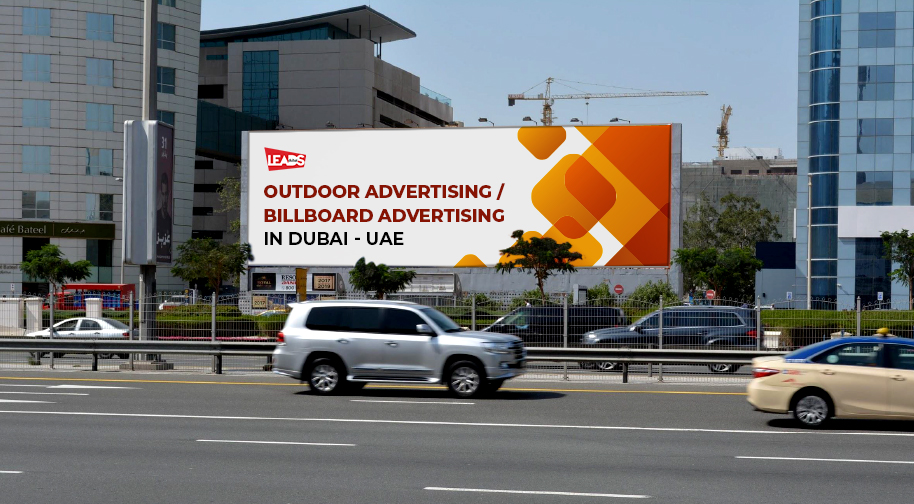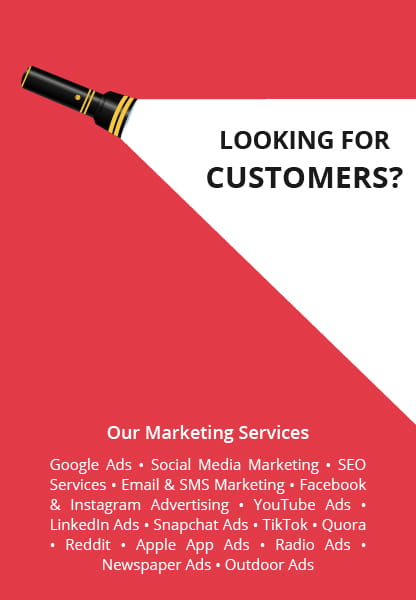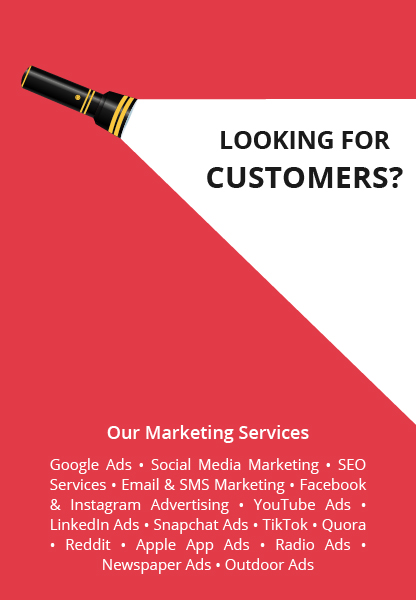Outdoor Advertising / Billboard Advertising in Dubai - UAE
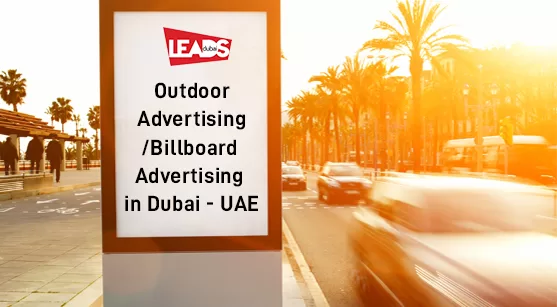
Bridge Banners
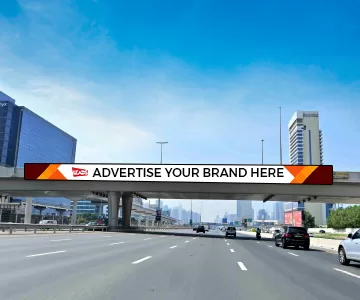
Unipoles
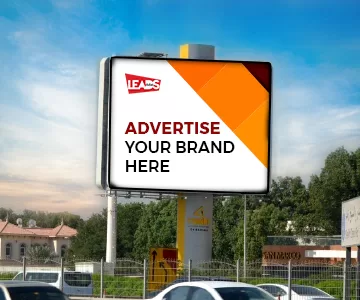
Lamp Posts
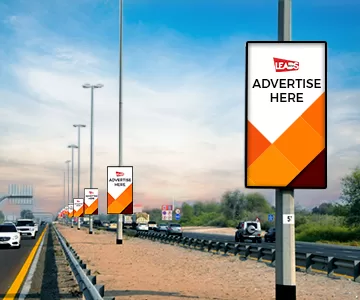
Roof Tops
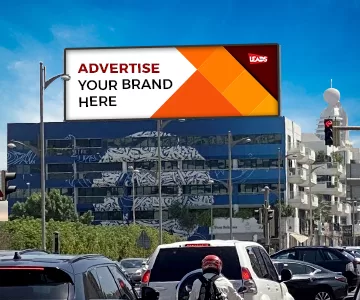
LED Billboards
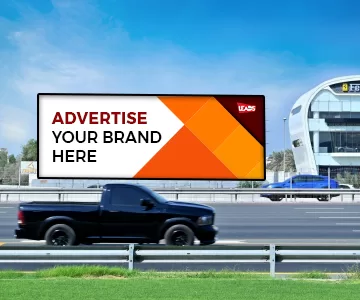
Glass graphics
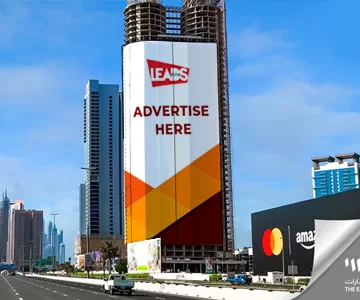
Scaffoldings (Hoardings)
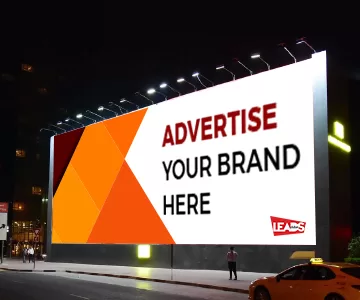
Taxi Advertising
Truck Advertising
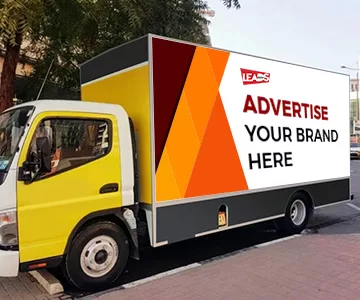
Van Advertising
There are other 11 outdoor advertising options.
Also read about Advertising business in dubai. Is it working?
Outdoor Advertising with other marketing
Best Outdoor Advertising services company in Dubai, UAE. Contact us for Outdoor Advertising in Dubai/UAE
Check with us for best Outdoor Advertising Combo Offer Right Now – Call +971 50 304 7470
Quick Enquiry
FAQ
1. What Outdoor Advertising Options are there in Dubai / UAE?
2. How much does for Billboard Cost?
The cost depends on various factors like the type of outdoor media, duration, the location you choose. The cost range starts from AED 1500 for renting one taxi for a month to AED 350,000 per month for hoarding on Sheikh Zayed Road. The lesser the renting duration will be the total cost. Renting duration could be from 1 week, month, 3 months, 6 months or a year too.
3. What is the duration for Outdoor Advertising?
4. What is the process of booking Outdoor Ads?
5. How much does it cost to advertise in Dubai?
1. Billboards :
○ Static Billboards: Costs can range from approximately 10,000 AED to 50,000 AED per month depending on the size, location (prime locations like Sheikh Zayed Road or Downtown
Dubai will be more expensive), and visibility.
○ Digital Billboards: Digital billboards tend to be more expensive due to their dynamic capabilities and higher visibility. Costs can range from 20,000 AED to over 100,000 AED per
month.
2. Transit Advertising:
○ Bus Advertising: Ads on buses can range from 5,000 AED to 15,000 AED per month per bus, depending on the size and placement of the ad.
○ Metro Advertising: Metro station ads or train wraps can cost between 10,000 AED to 50,000 AED per month, with prices varying based on station popularity and line coverage.
3. Street Furniture :
○ Bus Shelters, Benches, Kiosks: Costs typically range from 3,000 AED to 15,000 AED per month depending on location and visibility.
4. Digital Out-of-Home (DOOH):
○ Digital Screens: Prices can vary widely based on screen size, location, and duration of the ad. Costs for prominent digital screens in high-traffic areas can start from 20,000 AED per
month and go up significantly.
5. Print Media:
○ Newspapers and Magazines: Advertising costs in print media can vary based on circulation, size of the ad, and whether it’s in color or black-and-white. Full-page ads can range from
5,000 AED to 30,000 AED or more per insertion.
6. Online and Digital Advertising:
○ Social Media Ads: Costs for advertising on platforms like Facebook, Instagram, LinkedIn, etc., can vary based on targeting options, audience size, and ad format. Costs can range
from a few hundred AED to several thousand AED per campaign.
Google Ads: Cost-per-click (CPC) or cost-per-thousand impressions (CPM) models apply, with prices varying based on keyword competitiveness and targeting settings.
8. How can I advertise in Dubai?
1. Identify Your Target Audience: Understand who your target audience is in Dubai and where they spend their time. This will help you choose the most effective advertising channels.
2. Choose Your Advertising Medium: Select from various advertising mediums available in Dubai, such as:
○ Outdoor Advertising: Billboards, transit ads (buses, metro), digital screens.
○ Print Media: Newspapers, magazines, brochures.
○ Digital Marketing: Social media ads (Facebook, Instagram, LinkedIn), Google Ads, email marketing.
○ Events and Sponsorships: Sponsorship of local events, conferences, or exhibitions.
3. Select Advertising Locations: Determine strategic locations for your ads based on your target audience’s behavior and preferences. Consider high-traffic areas, popular landmarks, and venues frequented by your demographic.
4. Create Compelling Ads: Develop creative and engaging advertisements that resonate with your target audience. Ensure your messaging is clear, concise, and culturally appropriate for the Dubai market.
5. Work with Local Agencies: Consider partnering with local advertising agencies or media buyers who have experience in the Dubai market. They can help you navigate regulations, negotiate rates, and optimize your ad placements for maximum impact.
6. Comply with Regulations: Be aware of advertising regulations in Dubai, such as content guidelines and permit requirements for outdoor ads. Ensure your campaigns meet legal standards to avoid penalties.
7. Monitor and Optimize: Track the performance of your advertising campaigns using metrics like reach, engagement, and conversion rates. Use this data to refine your strategies and improve ROI.
8. Utilize Technology: Leverage digital tools and platforms for targeting, tracking, and optimizing your ads. Digital marketing allows for precise audience targeting and real-time performance monitoring.
By following these steps and leveraging the diverse advertising options available in Dubai, you can effectively reach your target audience and achieve your marketing objectives in this dynamic and competitive market.
9. Is outdoor advertising worth it?
- High Visibility: Outdoor ads, such as billboards and transit ads, are prominent in public spaces, offering high visibility and exposure to a broad audience. They can capture attention and create brand awareness effectively.
- Reach and Frequency: Outdoor advertising allows you to reach a large number of people repeatedly. Ads placed in busy areas or along major commuter routes ensure exposure to both pedestrians and drivers multiple times.
- Targeted Local Advertising: Outdoor ads can be strategically placed in specific locations to target local audiences. This is beneficial for businesses aiming to attract customers within a certain geographic area, such as retail stores, restaurants, or service providers.
- Complement to Digital Campaigns: Outdoor advertising can complement digital marketing efforts by reinforcing brand messages seen online. It provides a tangible presence that enhances brand recall and credibility.
- Creative Flexibility: With advancements in technology, outdoor advertising now includes digital screens that allow for dynamic and interactive content. This flexibility can attract attention and engage viewers in innovative ways.
- Cost-Effectiveness: Compared to some traditional media like TV or radio, outdoor advertising can offer cost-effective options, especially for local or targeted campaigns. It provides a cost-efficient way to reach a large audience, particularly in urban areas.
- Brand Building and Impact: Outdoor ads can contribute to brand building by establishing a strong visual presence in the market. They convey brand values, personality, and messages that resonate with consumers.
10. Is outdoor advertising low cost?
• Billboards: Costs for static billboards can range from moderate to high, depending on their size and location. Prime locations in major cities or high-traffic areas generally command higher rates. Digital billboards tend to be more expensive due to their dynamic capabilities and higher visibility.
• Transit Advertising: Ads on buses, trains, and subways can vary in cost. Prices depend on factors like the size of the ad, the number of vehicles or stations covered, and the duration of the campaign.
• Street Furniture: Ads on bus shelters, benches, and kiosks typically have lower costs compared to billboards. Prices vary based on the location’s visibility and foot traffic.
• Digital Out-of-Home (DOOH): Digital screens in high-traffic areas or popular locations can be more expensive due to their technological capabilities and audience reach.
While outdoor advertising can be cost-effective for reaching a large audience, especially in urban areas with high foot traffic or commuter traffic, it is generally not considered low-cost compared to some digital marketing options. However, its effectiveness in generating brand visibility, awareness, and engagement can justify the investment for many businesses. It’s crucial to evaluate the specific goals of your advertising campaign, target audience, and available budget to determine if outdoor advertising aligns with your overall marketing strategy and objectives.
11. What are the rules for advertising in Dubai?
1. Department of Economic Development (DED):
○ All businesses must obtain a trade license from the DED to operate legally in Dubai, which includes advertising activities.
○ Advertisements must be truthful, not misleading, and must not promote illegal activities or products prohibited by law.
2. Dubai Municipality:
○ Regulates outdoor advertising, including billboards, signage, and public displays.
○ Advertisements must comply with specific guidelines regarding size, location, and design to maintain aesthetic standards and avoid visual pollution.
3. National Media Council (NMC):
○ Oversees media content and advertising across the UAE.
○ Ensures that advertisements do not violate cultural or religious sensitivities, uphold public morals, and respect the country’s traditions.
4. Telecommunications Regulatory Authority (TRA):
○ Regulates digital advertising, telecommunications, and online content.
○ Ensures that digital advertisements comply with privacy laws, spam regulations, and ethical standards.
5. Specific Guidelines:
○ Alcohol and Tobacco: Restrictions apply to advertising alcohol and tobacco products. Ads must comply with strict guidelines and may require special permits.
○ Religious and Cultural Sensitivities: Ads must respect Islamic values and avoid any content that may be deemed offensive or disrespectful to local customs and traditions.
○ Language: Advertisements should predominantly use Arabic or have Arabic translations if targeting local audiences. English is widely accepted in international contexts.
6. Permit Requirements:
○ Certain types of advertising, especially outdoor billboards and large-scale displays, may require permits from the relevant authorities (e.g., Dubai Municipality).
7. Penalties for Non-Compliance:
○ Violations of advertising regulations can result in fines, suspension of advertising permits, or legal actions against the offending parties.
12. Are digital billboards cheaper?
- Initial Costs: Digital billboards typically require a higher initial investment compared to static billboards due to the cost of the digital display technology and installation.
- Operational Costs: While static billboards have fixed costs once installed, digital billboards involve ongoing operational costs such as electricity for powering the digital display and maintenance fees for ensuring the display remains functional.
- Flexibility and Impact: Digital billboards offer greater flexibility in terms of content management and scheduling. They can display multiple ads in rotation, allowing advertisers to reach different audiences throughout the day. This dynamic capability often justifies the higher costs for advertisers looking to maximize exposure and engagement.
- Visibility and Location: Digital billboards are often placed in high-traffic areas or prime locations, which also contributes to their higher costs. The visibility and impact of digital billboards in such locations can justify the premium pricing.
- Market Demand: In competitive markets or popular locations, digital billboards may command higher prices due to their popularity and effectiveness in capturing audience attention.
Overall, while digital billboards offer advantages such as dynamic content and enhanced visibility, they are generally more expensive than static billboards. The decision to choose between digital and static billboards should consider your advertising goals, budget, target audience, and the specific market dynamics of the location where the billboard will be placed.
13. What is the greatest weakness of outdoor advertising?
- Limited Targeting: Unlike digital advertising which allows precise audience targeting based on demographics, interests, and behaviors, outdoor advertising typically reaches a broader, less targeted audience. This can result in inefficiencies if the majority of viewers are not within the advertiser’s target demographic.
- Inability to Track Conversions: Outdoor advertising traditionally lacks direct mechanisms to track conversions or measure ROI accurately. Unlike digital ads which can track clicks, conversions, and engagement metrics in real-time, outdoor ads rely on estimates and indirect methods to measure effectiveness.
- High Costs: While outdoor advertising can offer broad reach and visibility, it often comes with significant costs, especially for prime locations or digital billboards. This can be a barrier for smaller businesses with limited advertising budgets.
- Limited Flexibility: Once a billboard or outdoor ad is installed, making changes to the creative content or messaging can be costly and time-consuming. This lack of flexibility contrasts with digital ads which can be easily updated and optimized in real-time.
- Environmental Factors: Outdoor ads are exposed to environmental factors such as weather conditions (e.g., rain, wind) and natural wear and tear over time. This can impact visibility and the longevity of the ad’s effectiveness.
- Regulatory Challenges: Different regions may have strict regulations regarding outdoor advertising, including size limitations, content restrictions, and permit requirements. Advertisers must navigate these regulations which can add complexity and cost to campaigns.
Despite these weaknesses, outdoor advertising remains a valuable component of many marketing strategies due to its ability to generate brand awareness, reach mass audiences, and provide continuous exposure in high-traffic areas. Successful outdoor advertising campaigns often integrate well with digital and other marketing channels to maximize overall effectiveness and achieve marketing objectives.
14. What is the most common outdoor advertising?
- Billboards: Large, static or digital displays typically placed along highways, major roads, and in urban areas to maximize visibility and reach a broad audience.
- Transit Advertising: Ads on buses, trains, taxis, and other forms of public transportation. These ads move throughout the city, reaching commuters and pedestrians alike.
- Street Furniture: Ads on bus shelters, benches, kiosks, and other public amenities located in high-traffic areas such as sidewalks and shopping districts.
- Digital Out-of-Home (DOOH): Digital screens and displays in high-traffic locations like shopping malls, airports, and city centers. DOOH allows for dynamic content and real-time updates.
- Posters and Flyers: Smaller-scale ads posted on community boards, walls, or poles in local neighborhoods or business districts.
- Guerrilla Advertising: Unconventional and creative forms of outdoor advertising that aim to surprise and engage viewers, often using unexpected locations or materials.
These forms of outdoor advertising are widely used by businesses and brands to increase visibility, reach target audiences, and reinforce brand messaging in public spaces. Each type offers unique advantages in terms of reach, audience targeting, and impact depending on the specific marketing objectives and budget constraints.
15. What is the cheapest place to run ads?
- Social Media Advertising: Platforms like Facebook, Instagram, and LinkedIn offer targeted advertising options that can be relatively affordable compared to traditional media. You can set specific budgets and target audiences based on demographics, interests, and behaviors.
- Google Ads: Pay-per-click (PPC) advertising on Google Search or Display Network can be cost-effective, especially when targeting niche keywords or specific geographic locations. You only pay when someone clicks on your ad, making it a measurable and potentially efficient option.
- Local Publications and Community Boards: Advertising in local newspapers, magazines, or community bulletin boards can be cost-effective for targeting a specific geographic area or niche audience.
- Email Marketing: Sending targeted promotional emails to your existing customer base or opt-in subscribers can be a cost-effective way to promote your products or services directly.
- Content Marketing: Creating valuable and engaging content on your own website or blog can attract organic traffic over time without the ongoing costs associated with paid advertising.
- Influencer Marketing: Collaborating with influencers or micro-influencers who align with your brand can sometimes offer cost-effective exposure to their engaged audience.
When considering the cheapest place to run ads, it’s important to evaluate the overall return on investment (ROI) and effectiveness in reaching your target audience. Different platforms and strategies may work better depending on your business goals, budget, and the preferences of your target market.
16. How much should I pay for advertising?
- Business Goals: Define clear objectives for your advertising campaign, such as increasing brand awareness, generating leads, driving sales, or promoting a new product/service.
- Target Audience: Understand your target audience demographics, behaviors, and preferences to determine the best advertising channels and messaging.
- Competitive Landscape: Research what your competitors are spending on advertising to gauge industry norms and competitiveness.
- Advertising Platforms: Evaluate different advertising platforms (e.g., social media, search engines, outdoor, print) based on their reach, cost-effectiveness, and ability to reach your target audience.
- Budget Allocation: Allocate your budget based on the potential return on investment (ROI) from each advertising channel. Consider a mix of channels to reach different stages of the customer journey.
- Testing and Optimization: Start with a conservative budget and test different ad campaigns to measure effectiveness. Optimize based on performance metrics such as click-through rates, conversions, and cost per acquisition (CPA).
- Long-Term Strategy: Consider your advertising budget as part of your long-term marketing strategy. Regularly review and adjust your budget based on campaign performance, market trends, and business goals.
There is no one-size-fits-all answer to how much you should pay for advertising. It depends on your specific circumstances and objectives. It’s crucial to monitor and evaluate the performance of your advertising campaigns regularly to ensure you’re maximizing your budget and achieving your desired outcomes.
17. How can I get advertising permit in Dubai?
1. Contact the Dubai Municipality: The Dubai Municipality oversees outdoor advertising regulations in the city. Visit their official website or contact their offices to understand the specific requirements and procedures for obtaining an advertising permit.
2. Prepare Required Documents: Typically, you will need to prepare certain documents which may include:
○ Trade license or business registration documents.
○ Detailed description of the advertising campaign including proposed locations, designs, and content of the advertisements.
○ No objection certificate (NOC) from relevant authorities if required.
3. Submit Application: Complete the advertising permit application form provided by the Dubai Municipality. Ensure all required documents are attached and the application form is filled out accurately.
4. Pay Fees: Pay the applicable fees for the advertising permit. Fees may vary depending on factors such as the type of advertising (billboard, digital screen, etc.) and duration of the campaign.
5. Approval Process: The Dubai Municipality will review your application and documents. They may conduct inspections of proposed advertising sites to ensure compliance with regulations.
6. Receive Permit: Once your application is approved and all fees are paid, you will receive the advertising permit. Make sure to comply with any conditions or guidelines provided with the permit.
7. Renewal and Compliance: Monitor the expiration date of your advertising permit and renew it as necessary. Ensure ongoing compliance with Dubai Municipality regulations regarding advertising content, placement, and duration.
18. How to do advertising in Dubai?
1. Define Your Advertising Goals: Determine what you want to achieve with your advertising campaign. Whether it’s increasing brand awareness, generating leads, driving sales, or promoting a specific product/service, clear goals will guide your strategy.
2. Understand Your Target Audience: Research and understand the demographics, behaviors, and preferences of your target audience in Dubai. This will help you tailor your advertising messages and choose the most effective channels.
3.Choose Your Advertising Channels: Consider various advertising channels available in Dubai:
○ Outdoor Advertising: Billboards, transit ads (buses, metro), digital screens.
○ Digital Marketing: Social media ads (Facebook, Instagram, LinkedIn), Google Ads, email marketing.
○ Print Media: Newspapers, magazines, brochures.
○ Events and Sponsorships: Sponsorship of local events, conferences, or exhibitions.
○ Local Directories and Websites: Advertising in local directories or relevant websites.
4. Create Compelling Ads: Develop creative and engaging advertisements that resonate with your target audience. Ensure your messaging is clear, culturally appropriate, and complies with local regulations.
5. Obtain Necessary Permits: For outdoor advertising, especially billboards and large displays, you may need permits from the Dubai Municipality. Ensure you have all required permits and approvals before launching your campaign.
6. Budget and Plan: Allocate your advertising budget based on your goals and chosen channels. Consider factors such as ad placement costs, production costs, and ongoing management expenses.
7. Monitor and Optimize: Track the performance of your advertising campaigns using metrics like reach, engagement, and conversion rates. Use this data to optimize your campaigns for better results.
8. Comply with Regulations: Ensure your advertising complies with local laws and regulations regarding content, placement, and permits. This includes obtaining any necessary approvals and adhering to guidelines set by authorities like the Dubai Municipality and National Media Council.
